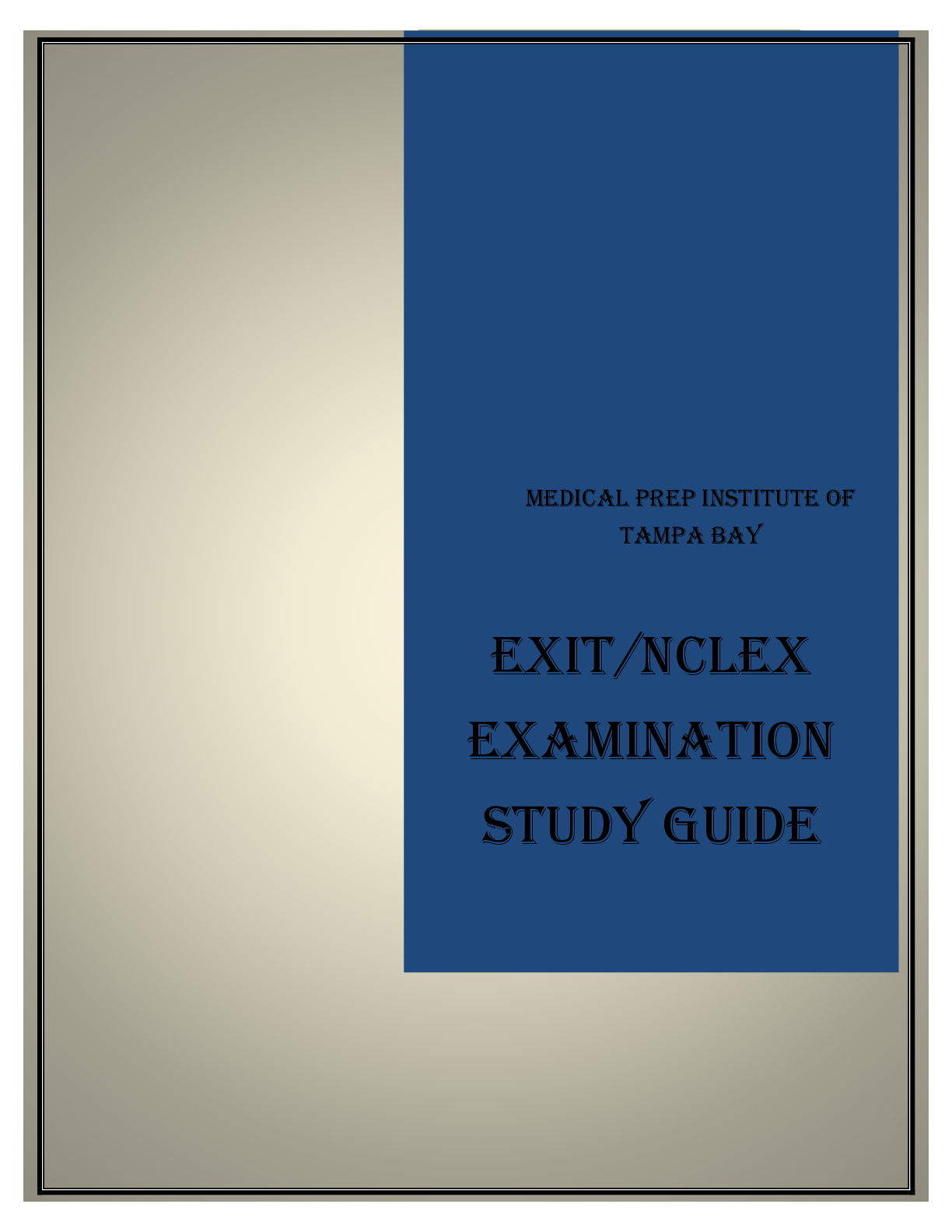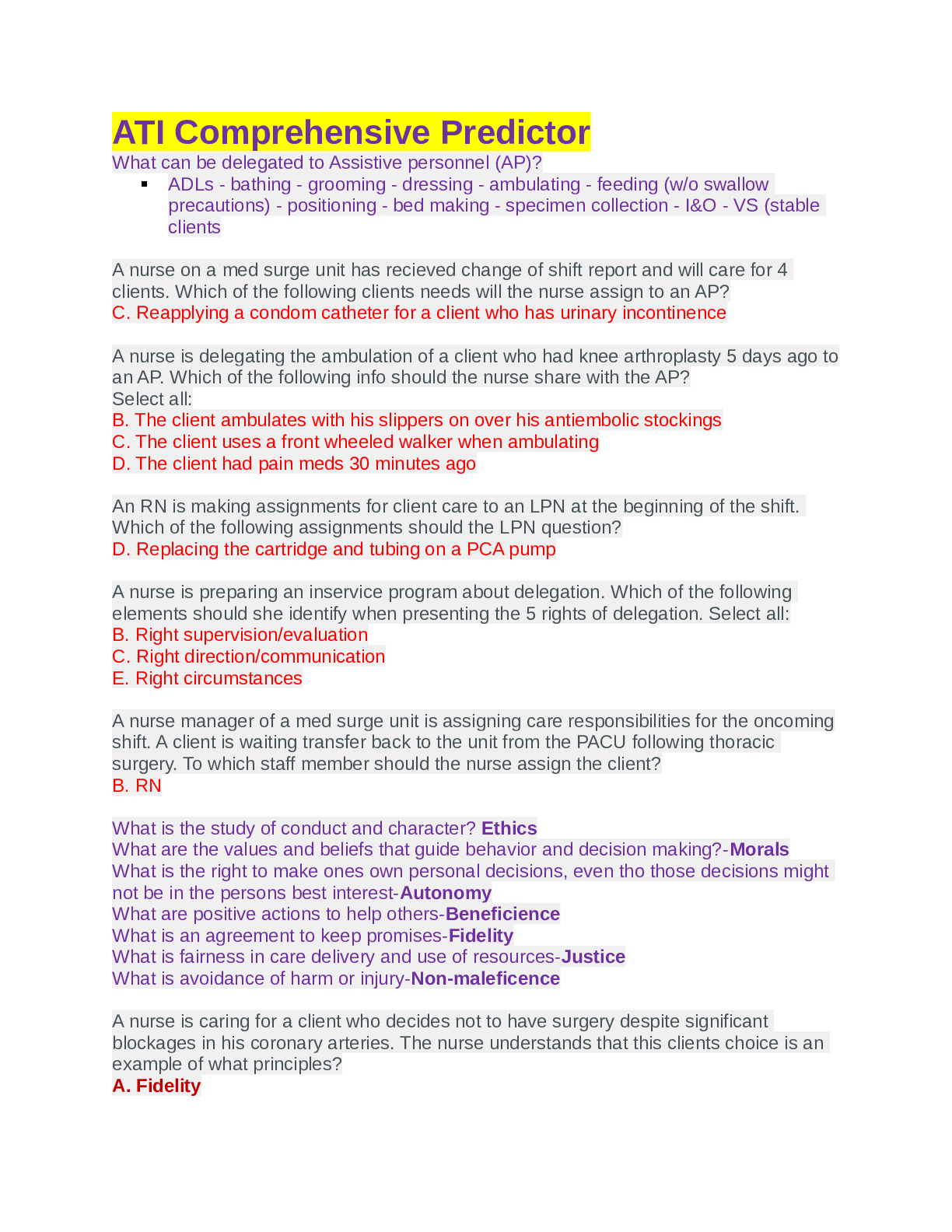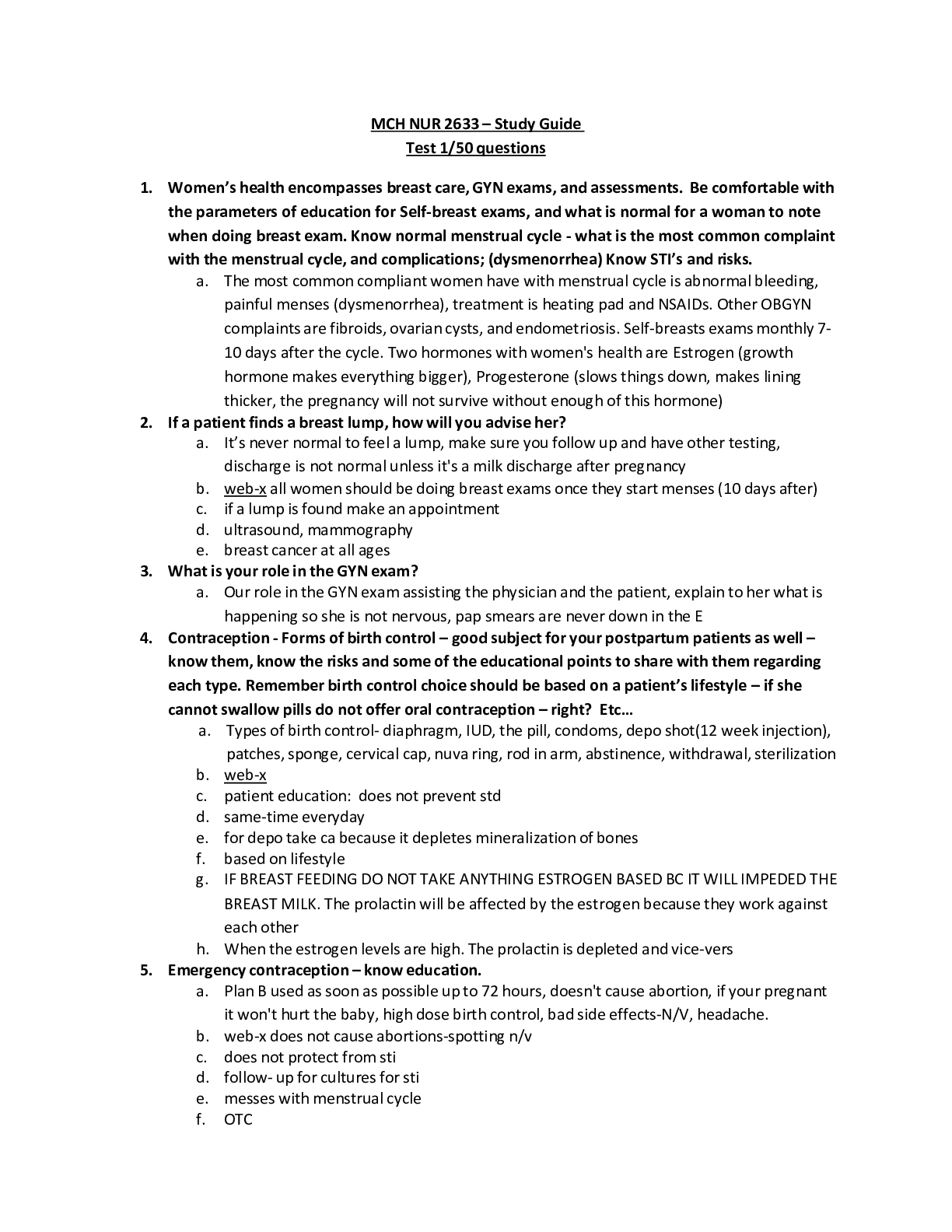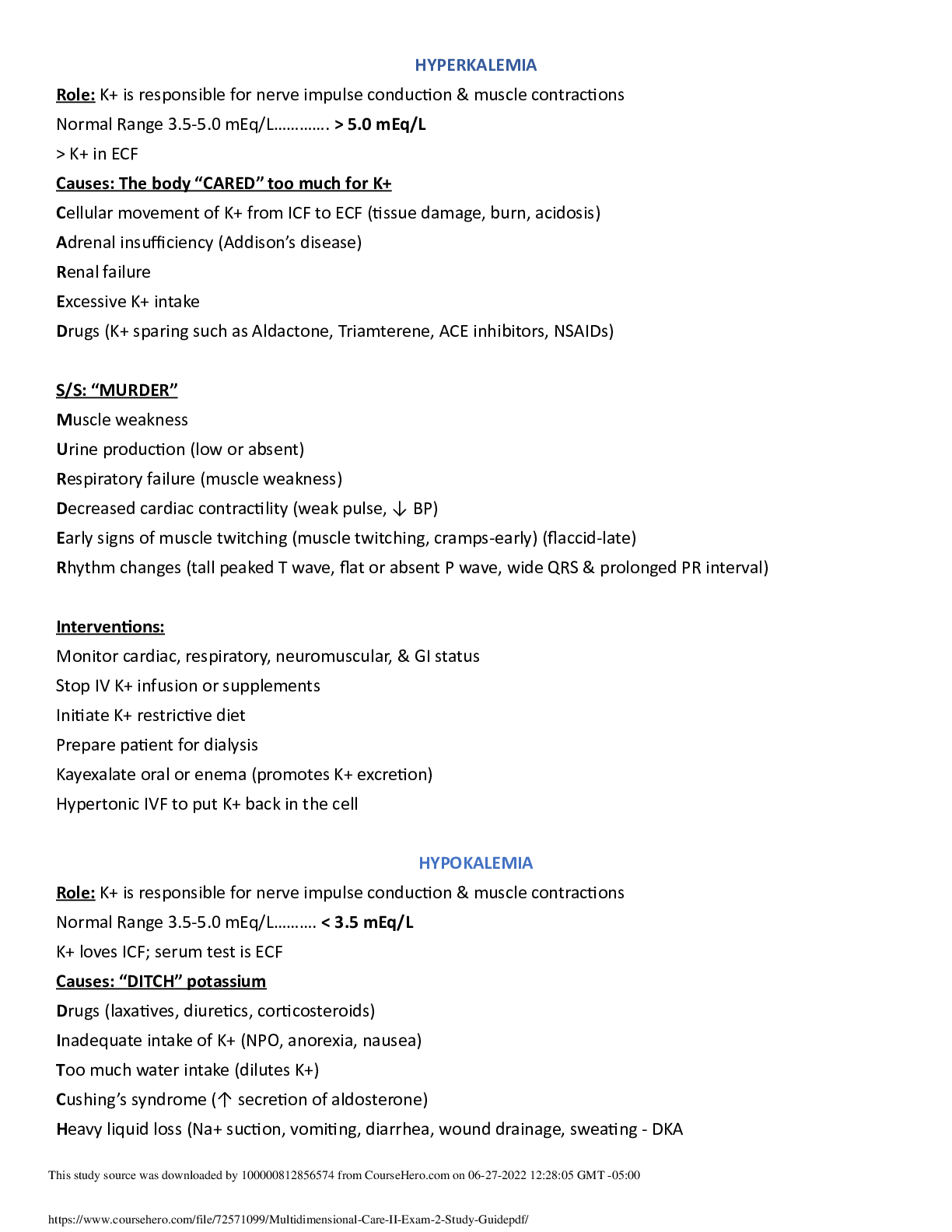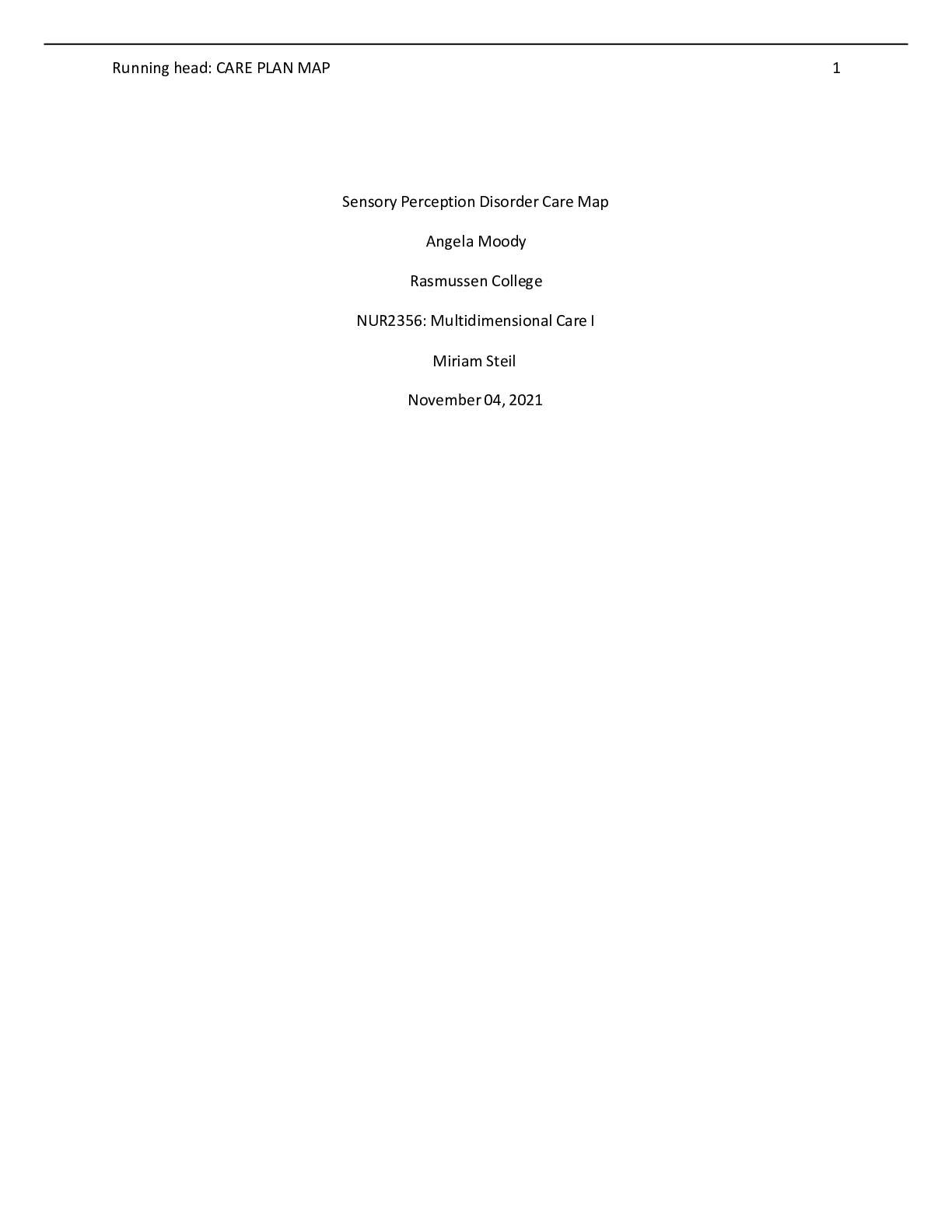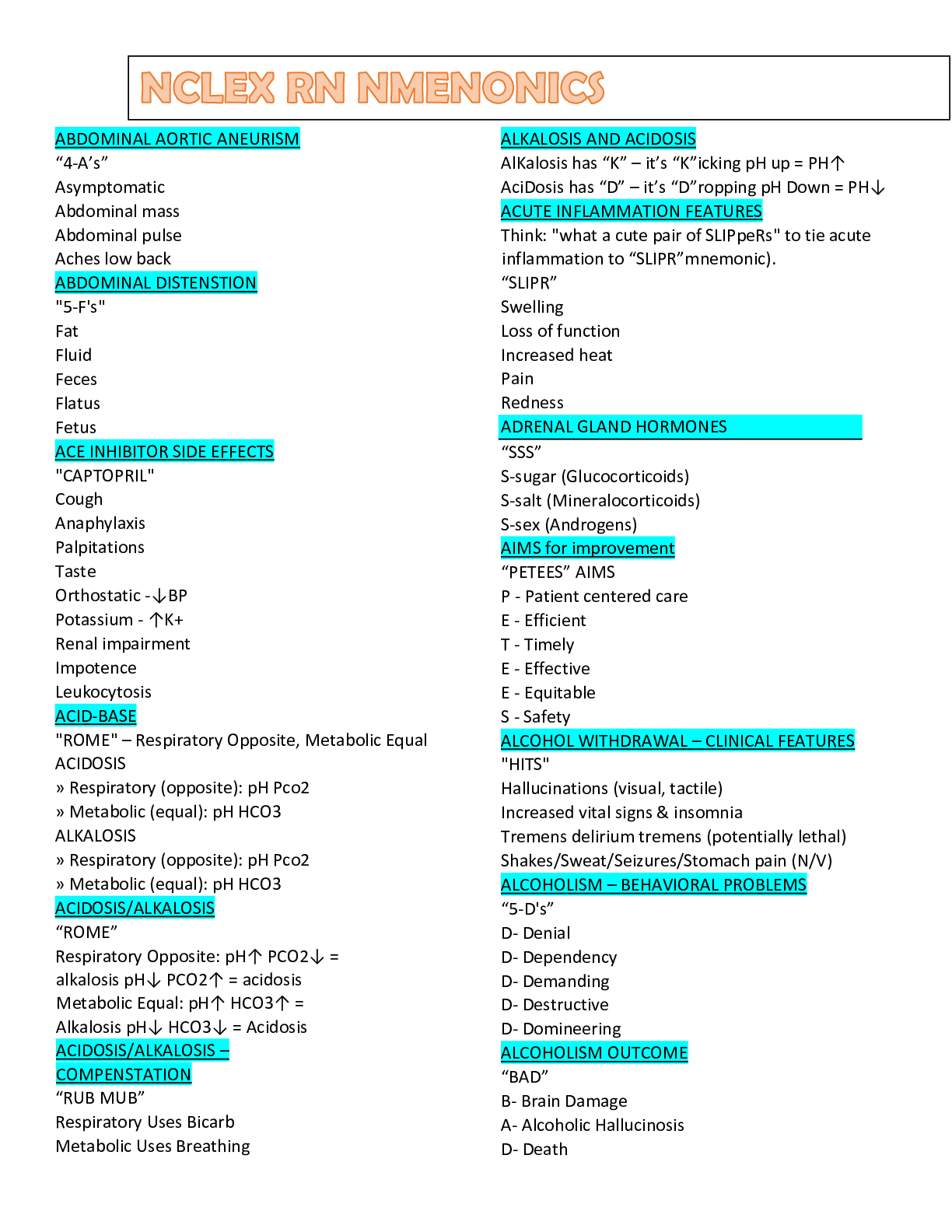Geology > STUDY GUIDE > University of California, IrvineESS 17Midterm2_StudyGuide_ UPDATE BY EXPERTS 2021 (All)
University of California, IrvineESS 17Midterm2_StudyGuide_ UPDATE BY EXPERTS 2021
Document Content and Description Below
Study Guide: Midterm 2 Volcanoes • What are the three main types of lava, and how are they different? 1. Basaltic(Mafic): Rock color Black, 50% silica, Low viscosity/ flow rapidly for long distan... ces a. Pillow basalt: round blobs of basalt cooled in water, continuous, common mid-ocean ridge 2. Andesitic(Intermediate): Rock color Grey, 60% silica, Too viscous to flow far/ tends to break up as it flows 3. Rhyolitic/Felsic(Granitic): Rock color Light Pink, 70% silica, Soo viscous may pile up in domeshaped mass, EXPLOSIVE • How does tectonic plate margin influence the type of volcano present? Be able to predict what type of volcano (if any!) would form at each plate boundary and why. Oceanic to Continental conv: Andesite or Rhyolite Volcano Oceanic to Oceanic conv: Andesite or Rhyolite Volcano Continental to Continental conv: No Volcano! • What is viscosity, and how does it vary with the lava types? Gas content? Explosivity? Viscosity = Flowability, As viscosity increases, gas content and explosiveness increases; while distance and temperature decreases. Low Viscosity Lava thin & runny. High Viscosity Lava thick & sticky • What are the three main volcano types, and what are some of the defining characteristics of each? 1. Shield: Basalt, broad, shallow slopes 612°, Ex( Mauna Loa, Hawaii) 2. Cinder Cones: Basalt, freezes in air, small with steep slopes, very common Ex(Lassen Volcanic National Park, CA) 3. Composite cones(stratovolcano): AndesiteRhyolite, subduction zones, generally steep 45°, Layered pyroclastic debris & lava flows, Ex(Mt. Rainier, Washington) 4. Calderas: gigantic volcanic depression, massive eruption, Ex(Crater Lake, Oregon) • Why does magma melt? In what ways can we get magma to melt? Magma rises through the crust b/c it's less dense(hot) than surrounding rocks. Increase in temperature, decreased pressure as rock rises, addition to water lowers melting point • What is a supervolcano? Volcano capable of producing a volcanic eruption with an ejecta volume greater than 1,000 km3. Typically depressions in the ground, Occur when magma in the mantle rises into the crust from a hotspot but is unable to break through the crust, and pressure builds in a large and growing magma pool until the crust is unable to contain the pressure • What is a hotspot, and how do we track hotspots? Volcanic regions NOT associated with plate boundaries, Rocks melt to generate magma in mantle, Develops above mantle plumes (areas of hot upwelling mantle). ex.HawaiianEmperor Seamount Chain. Plate moves but mantle plume DOESN’T [Show More]
Last updated: 1 year ago
Preview 1 out of 8 pages
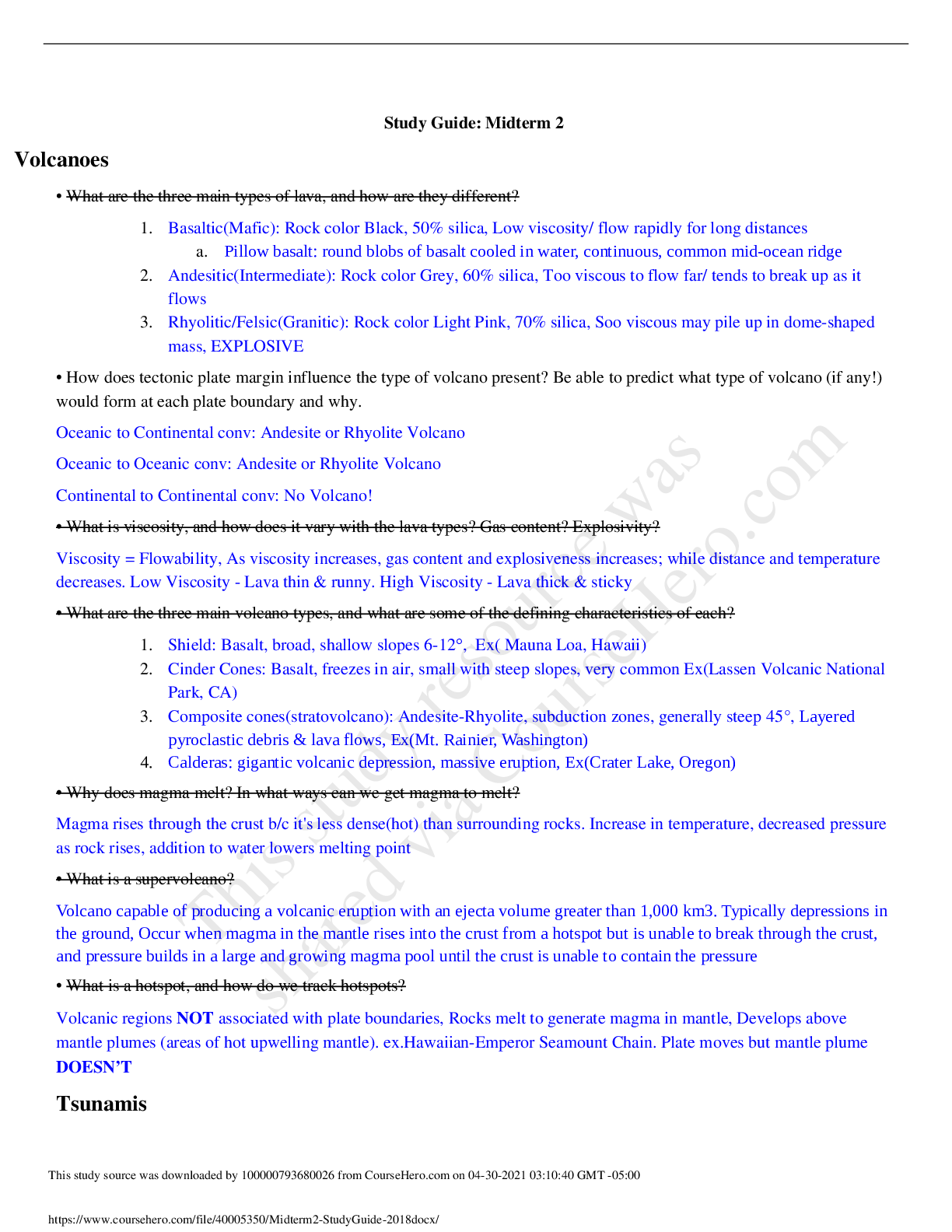
Buy this document to get the full access instantly
Instant Download Access after purchase
Add to cartInstant download
We Accept:

Reviews( 0 )
$8.00
Document information
Connected school, study & course
About the document
Uploaded On
Apr 30, 2021
Number of pages
8
Written in
Additional information
This document has been written for:
Uploaded
Apr 30, 2021
Downloads
0
Views
87



